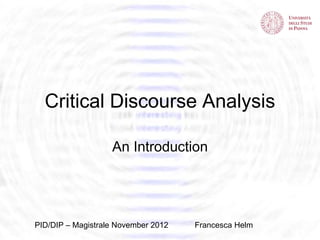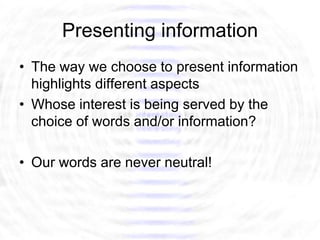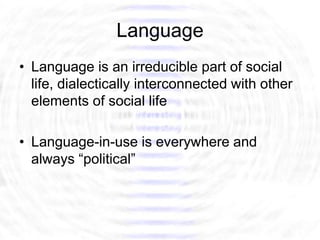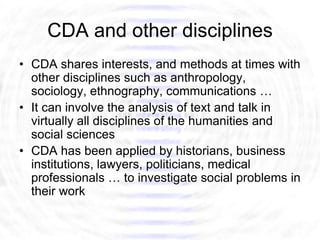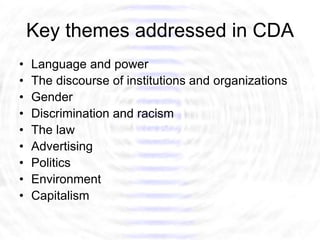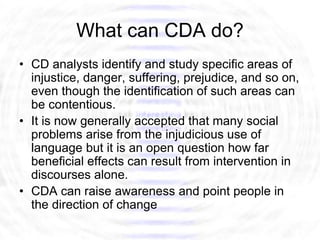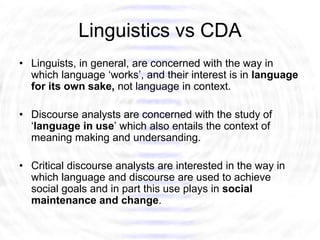The document provides an introduction to critical discourse analysis (CDA). It discusses key concepts such as how language shapes and reflects social practices and power relations. CDA examines how discourse reproduces and challenges ideologies through a close analysis of text and consideration of wider social contexts. The document outlines some of the main approaches and theorists in CDA and contrasts it with traditional linguistics by noting CDA's focus on language in use and its aim to understand how discourse enacts social goals.
